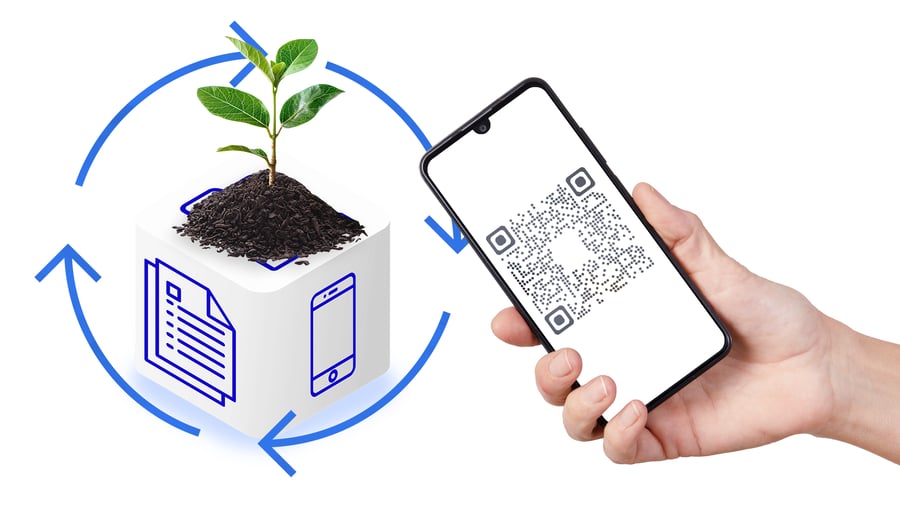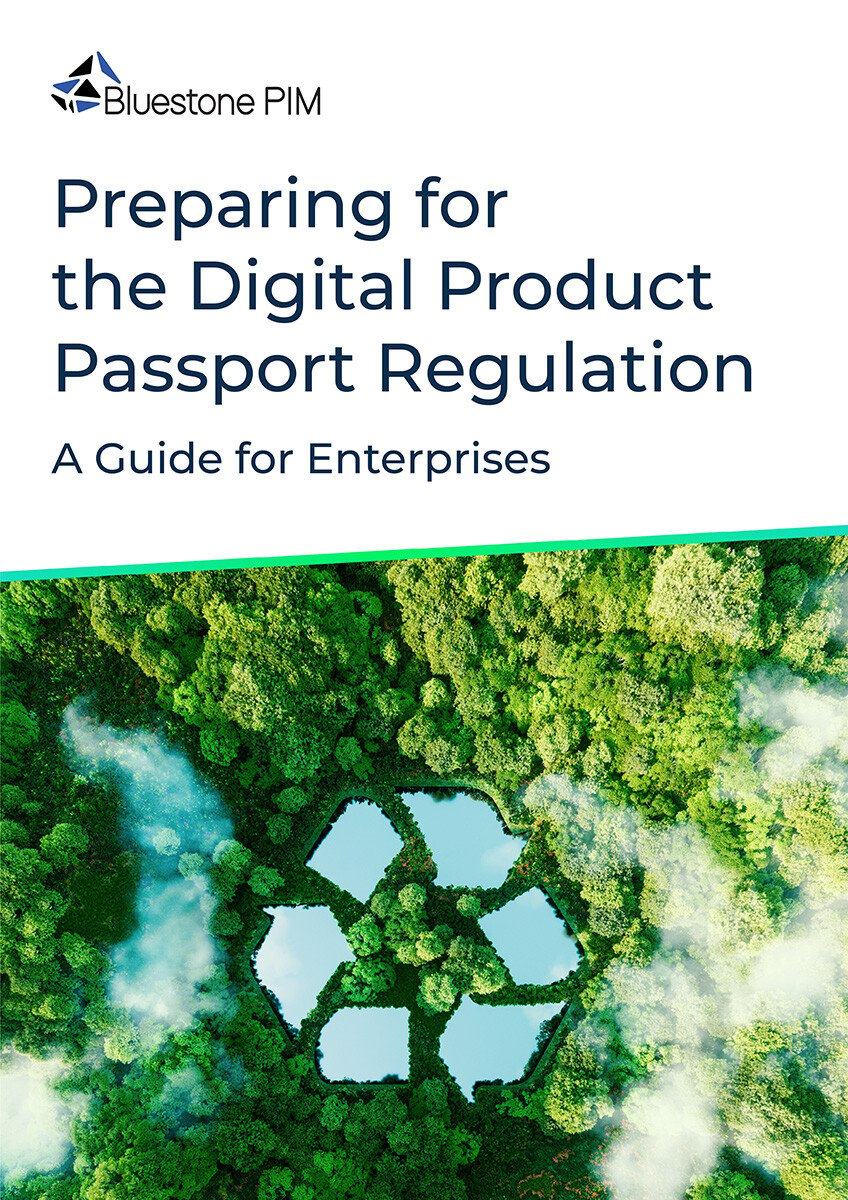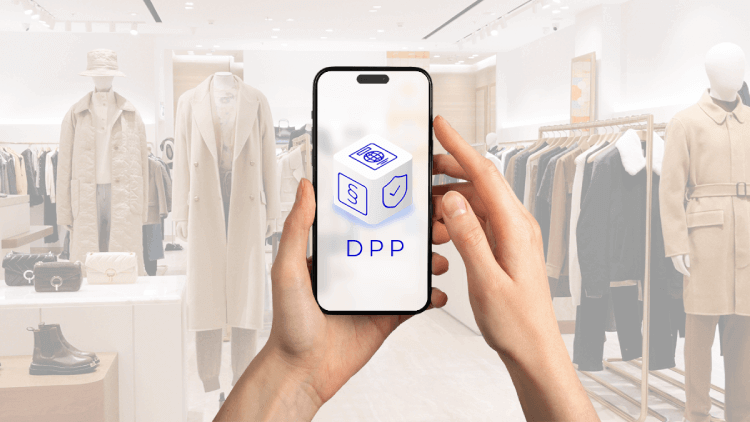What is the Digital Product Passport and Why Does it Matter in Europe?

Table of Contents
Climate change is driving significant shifts in business strategy. For forward-thinking brands, embracing sustainability isn’t just about reducing environmental impact; it’s also about staying competitive and meeting the expectations of conscious consumers. According to Deloitte's 2024 CxO Sustainability Report, climate change is one of the top three most pressing challenges for 38% of C-level executives, and 50% of them have already implemented technology solutions to meet their climate and environmental goals.
We read the boring EU docs so you don’t have to
Sign up for early updates on Digital Passport regulations and real-world steps to get your product data ready.
In Europe, this broader shift toward sustainability has placed a growing emphasis on product transparency. And at the forefront of the European Commission’s latest green initiatives is the digital product passport.
Set to launch in 2026, the digital product passport is expected to redefine how businesses operate, offering a roadmap to greater efficiency, compliance, and sustainability in retail. Businesses must start preparing for this transformation now.
What is a Digital Product Passport?
The digital product passport (DPP) is a digital document containing essential product information—such as origin, materials, environmental impact, and disposal guidelines—that is digitally accessible to stakeholders. Introduced under the Ecodesign for Sustainable Products Regulation (ESPR), the initiative aims to enhance traceability across the supply chain, support eco-friendly business practices, and reduce product waste.
Once the ESPR goes into effect, it will require "nearly all products sold in the EU to feature a digital product passport." This means that even businesses outside the EU must comply if they wish to sell their products within the EU market.
But even though the ESPR has yet to be implemented, many companies around the world have introduced initiatives inspired by the DPP and its focus on transparency and sustainability, and have applied those principles to their business operations.

DOWNLOAD FREE E-BOOK
Preparing for the Digital Product Passport Regulation
Is your business ready for the digital product passport (DPP) regulation? Our all-in-one guide breaks down everything you need to get yourself prepared.
The Goals of a Digital Product Passport
The DPP is designed to solve real challenges that brands and consumers face today—the growing demand for transparency and the current lack of reliable product data.
By making product information publicly accessible, the DPP helps industries work together more efficiently and transparently. However, transparency and collaboration are just two aspects of its broader objectives.
Below, we break down the goals driving this initiative.
-
Transparency: Provides detailed product data, such as origin, materials, environmental impact, and recyclability, accessible electronically at all stages of the value chain.
-
Sustainability: Promotes eco-friendly production and consumption by sharing information on carbon emissions, resource use, and recyclability.
-
Traceability: Enables tracking of a product’s lifecycle—from raw materials to disposal—improving supply chain visibility and accountability.
-
Product quality and safety: Ensures compliance with safety and quality standards via certifications, instructions, and test results.
-
Consumer empowerment: Offers verified product data on sustainability, ethical sourcing, and environmental impact to support value-based purchasing decisions.
-
Circular economy: Encourages longer product lifespans by detailing repairability, reusability, and the presence of hazardous materials, reducing waste.
-
Innovation and design: Facilitates product innovation by encouraging repairable and sustainable designs through shared data.
-
Regulatory compliance: Standardises sustainability data for easy compliance with the ESPR and other EU regulations.
-
Digital transformation: Utilises technologies like blockchain and IoT to provide real-time, verifiable access to product data across the supply chain.
-
Data security and privacy: Protects sensitive data from bad actors while maintaining transparency for regulatory and sustainability purposes.
What Information does the Digital Product Passport Require?
The exact data required in the DPP will depend on the group the product belongs to, as defined by the European Commission. Each product group—and its specific data requirements—will be governed by its own delegated acts under the Ecodesign for Sustainable Products Regulation.
So while the required information varies, there are some data points that may be included for different product categories:
-
Origin: Where and how the product was manufactured, including the sourcing of raw materials.
-
Materials: Information about the materials used, such as recyclability or the presence of hazardous substances.
-
Environmental impact: Data on the product’s carbon footprint, energy consumption, and overall sustainability throughout its lifecycle.
-
Compliance documentation: Safety certificates, user manuals, and other regulatory compliance documents (e.g., proof of conformity with EU standards).
-
Circularity information: Guidance on repairability, reusability, and recyclability, including durability information.
-
Disposal guidelines: Instructions for responsible disposal at the product’s end of life.

Each of these data points will be tailored to the product group, so that the information is relevant to the product’s environmental and regulatory context.

DOWNLOAD FREE E-BOOK
What is the ROI of PIM?
This whitepaper explores PIM as a powerful tool to streamline operations and boost your bottom line.
Who Should Care About the Digital Product Passport?
The DPP will have ripple effects across many different stakeholders, all playing key roles in ensuring transparency, sustainability, and compliance.
Manufacturers and Producers
For manufacturers, DPPs provide detailed insights into the origin and journey of their raw materials and components. This data allows them to pinpoint bottlenecks, streamline production processes, and ensure that every step meets sustainability and quality standards. By using DPPs to track product materials and certifications, they can also minimise errors and avoid supply chain disruptions.
Consumers
DPPs give consumers the facts they need—whether it’s where a product was sourced, what it’s made of, or how environmentally friendly it is. This transparency allows buyers to make decisions that reflect their priorities, such as choosing eco-friendly or ethically sourced products.
Supply Chain Partners
With DPPs, supply chain partners gain real-time visibility of where products are and what condition they’re in. This enables them to identify issues faster—whether it’s a shipment delay or a defect—leading to quicker resolutions and a more reliable supply chain.
Regulatory Authorities
DPPs make compliance simpler by providing authorities with verified, easily accessible product information. This streamlines the process of assessing whether products meet legal standards and allows for quicker corrective or enforcement actions if issues arise.
Retailers
For retailers, DPPs provide proof that the products on their shelves are authentic and meet quality standards. They can also use this transparency to attract consumers who value sustainability and product traceability. Also, by tracking shelf life or product recalls via DPPs, inventory management becomes more precise, helping them avoid stocking defective or expired goods.
Environmental and Sustainability Advocates
Advocates can tap into comprehensive product data to analyse its environmental impact—whether it’s carbon emissions, material sourcing, or recyclability. This data allows them to hold companies accountable and support products that align with their sustainability goals.
Technology Providers
Technology providers play a critical role by creating the platforms that power DPPs. They ensure that product data is securely stored and shared in a way that’s accessible to the right stakeholders, while maintaining data privacy and integrity.
Implementation Timeline for the Digital Product Passport
The implementation of the DPP will be rolled out in phases, beginning with select key product groups. As specified in Regulation (EU) 2024/1781, the initial focus will be on 13 product groups, such as iron, steel, aluminium, textiles, and chemicals, with the first working plan expected to be adopted by 19 April 2025.
However, this is just the start. Development of DPP regulations will continue through the introduction of new delegated acts between 2023 and 2027, gradually expanding the range of product categories covered. Companies should stay updated on upcoming working plans to ensure compliance as the DPP rolls out across various industries.
Here’s an overview of key milestones:
-
December 2019: Adoption of the European Green Deal, which set the stage for the DPP initiative with the goal of making the EU climate neutral by 2050.
-
March 2020: The EU Circular Economy Action Plan was adopted, further supporting sustainable production and consumption, which led to the creation of the DPP.
-
March 2022: A proposal for the Ecodesign for Sustainable Products Regulation (ESPR), which includes DPP information requirements, was introduced.
-
December 2023: A provisional agreement on the ESPR and DPP legislation was reached between the European Parliament and European Council.
-
April 2025: The European Commission is scheduled to publish its first working plan outlining the initial product groups prioritised for ecodesign regulations, including those subject to DPP requirements.
-
July 2026: Deadline for the European Commission to establish the DPP registry, which will house unique identifiers connected to products.
-
Sometime in 2027: Batteries will be the first product group for which the use of a DPP becomes a legal requirement under the recently adopted Battery Regulation.

Why a PIM Solution is Key to DPP Compliance
One of the most critical steps in preparing for the DPP is ensuring that your product data is accurate, centralised, and accessible across all relevant platforms and to all stakeholders.
Achieving this level of precision and organisation can be challenging, but Product Information Management (PIM) solutions are specifically designed to streamline this process, making them the ideal tool to help businesses meet DPP requirements.
PIM solutions are designed to handle large volumes of product data, keeping everything consistent, accurate, and up-to-date. To implement the DPP, businesses must first gather detailed product information. But without a centralised system to manage and organise this data, ensuring data accuracy and consistency can quickly become overwhelming.
Bluestone PIM simplifies this process by ensuring the necessary data is:
-
Stored in a central repository: PIM systems act as a “single source of truth” for all product data where all product-related information is stored. This makes the data easier to manage, track, and update, as it eliminates the need to search through multiple sources for the right information to work with.
-
Accessible to all relevant stakeholders: Whether it’s suppliers, customers, or regulatory authorities, PIM systems ensure that all required stakeholders have access to accurate, up-to-date product information.
-
Complete and verified: Whether rules are set in advance or applied retroactively, PIM systems ensure all required product data is captured. If any key information is missing, the PIM flags these gaps for corrective action, thus helping businesses maintain data completeness and compliance.
-
Accurate and consistent: Data in the PIM system can be automatically distributed across all channels, including the DPP, online marketplaces, company websites, and any other external platforms. With the PIM system synchronised across platforms, businesses can prevent the accidental publication of outdated or incorrect product information.
-
Ready for regulatory changes: Should new data points be required, PIM systems can add or update as many data fields as needed. PIM features such as version control and user permissions help ensure that updates are handled efficiently and data accuracy and compliance are maintained as businesses adapt to new regulatory requirements.
-
Traceable and transparent: A core objective of the DPP is to improve supply chain transparency and traceability. PIM systems centralise all product-related data, making it easier to manage and track the required information for regulatory compliance. They can then integrate with other systems, such as Enterprise Resource Planning (ERP) and Supply Chain Management (SCM), to gain full end-to-end visibility into a product’s lifecycle.
Conclusion
The Digital Product Passport (DPP) helps businesses improve transparency in their supply chains. With growing concerns about climate change and sustainability, companies must provide clear, accurate information about their products’ environmental impact. A PIM solution makes it easier to manage this information by keeping data accurate, consistent, and ready for use across the DPP and all other channels. This not only supports regulatory compliance but also helps businesses contribute to more sustainable e-commerce practices.
To learn more about how a PIM solution can help you comply with the DPP and other sustainability legislation, get in touch with our advisors, watch a quick demo video to explore our PIM features, or book a demo meeting to receive a walkthrough of the Bluestone PIM solution.
Editor’s note: This post was originally published in November 2023 and has been updated with the latest information.




